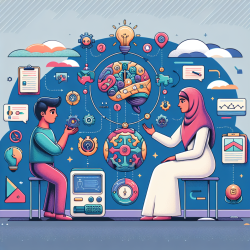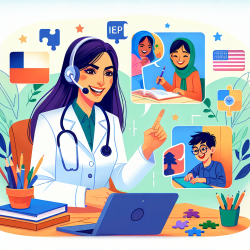Introduction
In the evolving landscape of autism spectrum disorder (ASD) interventions, social skills training (SST) remains a cornerstone. Traditionally, SST has been delivered face-to-face (F2F), but recent innovations have introduced Behavioral Intervention Technologies (BITs) as a promising alternative. A recent meta-analysis, "Social Skills Training for Autism Spectrum Disorder: a Meta-analysis of In-person and Technological Interventions," provides valuable insights into the efficacy of these approaches.
The Meta-Analysis: Key Findings
The study compared 14 F2F-SST and four BITs-SST trials, revealing that both methods significantly improved social skills in children and adolescents with ASD. Effect sizes were medium to high, with F2F-SST at 0.81 and BITs-SST at 0.93. These results suggest that BITs can be as effective as traditional methods, offering a viable alternative or supplement to F2F interventions.
Why Consider BITs?
- Accessibility: BITs can be accessed remotely, reducing barriers such as transportation and scheduling conflicts.
- Cost-Effectiveness: By reducing the need for physical infrastructure and in-person staffing, BITs can lower the cost of delivering interventions.
- Flexibility: BITs offer diverse virtual contexts for practicing social skills, which can be tailored to individual needs.
- Reduced Anxiety: For some children, interacting with technology may be less intimidating than face-to-face interactions, providing a comfortable environment for learning.
Challenges and Considerations
Despite the promising results, BITs-SST is not without challenges. Development costs can be high, and there is a need for human support to monitor and guide participants. Moreover, the generalizability of skills learned through BITs to real-world settings remains a concern. More large-scale, randomized controlled trials are needed to address these issues and validate the long-term efficacy of BITs.
Practical Applications for Practitioners
Practitioners looking to enhance their skills and offerings can consider integrating BITs into their SST programs. Here are some steps to get started:
- Stay Informed: Attend conferences, webinars, and read up-to-date publications on BITs and their applications in SST.
- Evaluate Tools: Research available BITs platforms and select those that align with your therapeutic goals and client needs.
- Combine Approaches: Use a hybrid model that incorporates both F2F and BITs to maximize benefits and cater to diverse learning preferences.
- Monitor Progress: Regularly assess the effectiveness of BITs interventions and adjust strategies as needed to ensure skill generalization.
Conclusion
The meta-analysis provides a strong case for the inclusion of BITs in social skills training for ASD. While traditional F2F methods remain effective, BITs offer a complementary approach that can enhance accessibility and flexibility. Practitioners are encouraged to explore these technologies further and consider their integration into existing programs.
To read the original research paper, please follow this link: Social Skills Training for Autism Spectrum Disorder: a Meta-analysis of In-person and Technological Interventions.










